The trip to the animal is brief. This was expressed by the painter Francis Bacon in the great canvases of him. Before, others, since ancient times, they shaped the animal that guards the human heart. The Egyptians represented their gods in bodies with heads of ibis, or crocodile, or falcon, or lioness.
for the greeks what was not human was already monstrous, like the Minotaur, locked in his labyrinth, before whom today we cannot avoid an outbreak of tenderness. The Middle Ages followed the tradition that identified the animal with vice, base instinct, sin. Thus Bosch filled his works with beings from which strange beasts. They inhabit infernal spaces, condemned to suffer by their nature.
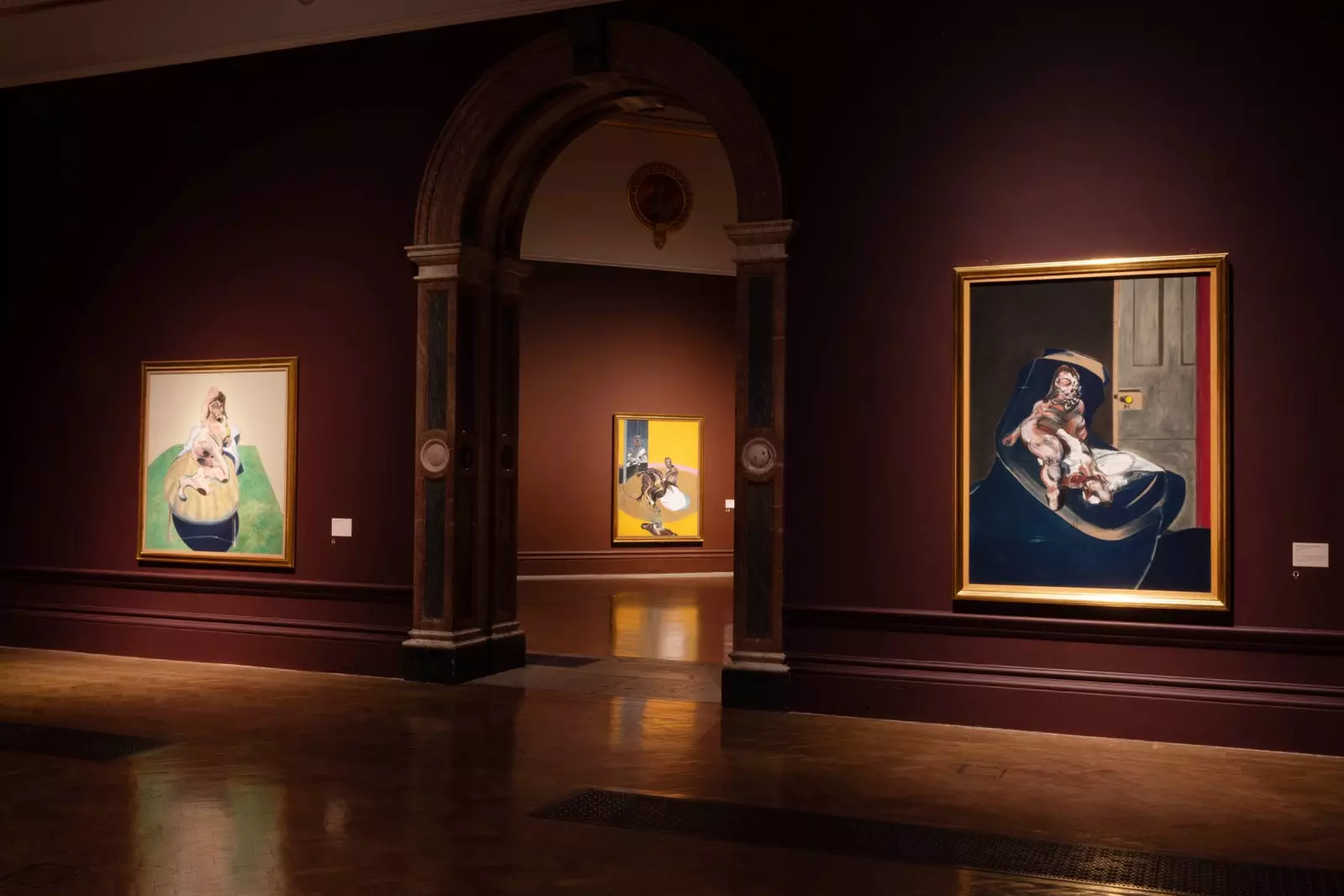
‘Francis Bacon: Man and Beast’, Royal Academy of Arts, London (January 29 – April 17, 2022).
FRANCIS BACON: MAN AND BEAST
In the Man and Beast exhibition we verified that, for Francis Bacon, there was no distance between the two. The artist grew up in the crude vision of Rembrandt and Goya, and on it he recreated the organic forms of the surrealists and Picasso. He stayed inside. His works are disturbing because they look inside and show what we don't want to see.
His father, a soldier and horse breeder, expelled him from home at the age of 16 after discovering his homosexuality and his fondness for cross-dressing. He sent him to Berlin with a family friend in order for him to become a man. Francis seduced him and he enjoyed the freedom that the city offered in the 1920s. He often traveled to Paris and finally he settled in London, where he devoted himself to decoration.
In his fondness for gambling, he even installed an illegal roulette wheel in his basement. He spent his nights hopping from bar to bar in Soho. Since the 1940s, he and Lucien Freud frequented the Colony Room, owned by his friend Muriel Blecher, who paid him to bring clients. He always occupied the same seat, in one of the corners. According to his acquaintances, he was generous and viperous, sharp wit.
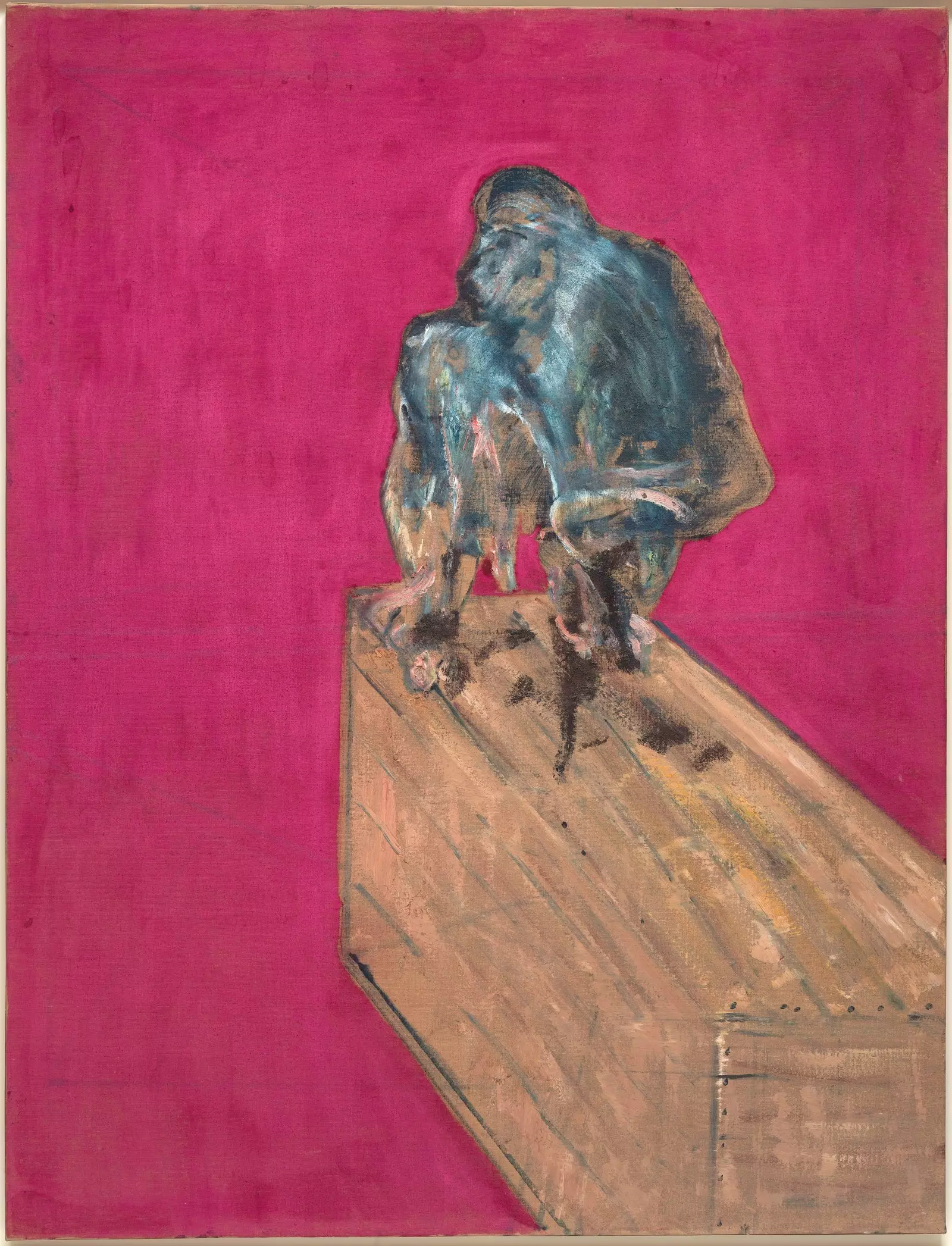
Francis Bacon, Study for Chimpanzee, 1957. Oil and pastel on canvas, 152.4 x 117 cm. Peggy Guggenheim Collection, Venice. Solomon R. Guggenheim Foundation, New York. Photo: David Heald (NYC)
A JOURNEY INSIDE
He stated that he was slow to get involved in painting because he was not interested in representing what was around him. His journey directed her inward. His alcoholic excesses and his penchant for tortuous relationships, marked by masochism, shaped a closed universe inhabited by animals and characters that are more flesh than skin.
He started from clippings that he hung in his study. The first investigations on the movement in photography, images from a trip to South Africa, a scene from an avant-garde movie in which a woman screams or death mask of the poet William Blake, they emerge again and again in his works.
After his agreement with the Marlborough Gallery, which paid for his pieces based on their size, triptychs multiply and its extension becomes monumental.
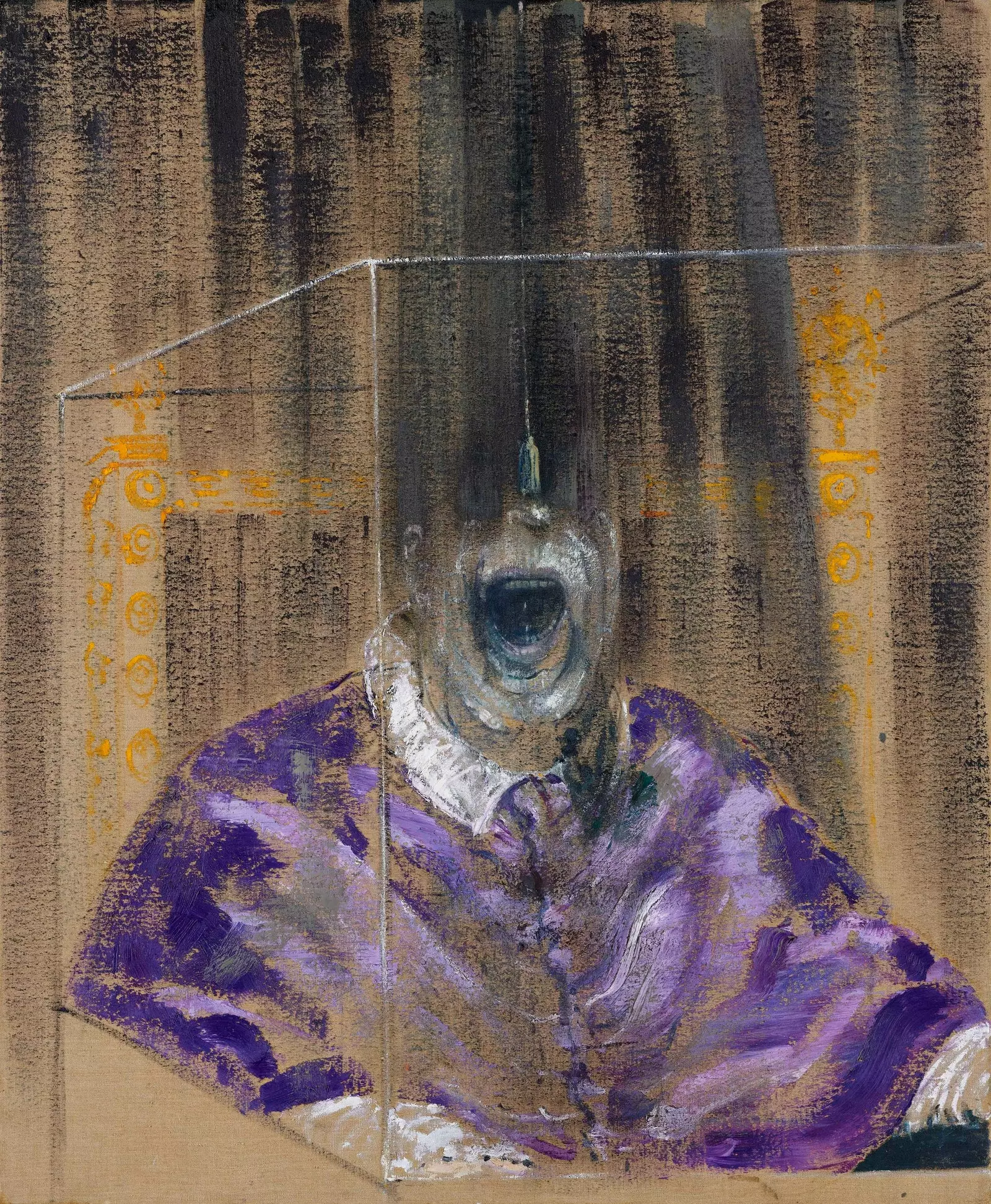
Francis Bacon, Head VI, 1949. Oil on canvas, 91.4 x 76.2 cm. Arts Council Collection, Southbank Centre, London.
WHERE MAN ENDS AND ANIMAL BEGINS
His most famous work, a version of the Portrait of Pope Innocent X by Velázquez, takes a character whose power borders on the divine, locks him in a cage and deprives him of his humanity with a scream, which, unlike Munch's, is just a mouth. In the mouth the man ends and the animal begins, affirmed Bacon.
For the artist, the monkey represented the fusion of both natures. If in man he sought animality, he transferred his loneliness to the animal. In the Royal Academy exhibition, the friendliest character is a baboon.
in the sixties he met George Dyer in a pub. He was young, from the working-class neighborhood of the East End, and had an intermittent history of shoplifting. Bacon, who had embraced conscious submission in his relationships, he became a protector of Dyer, whom he perceived as vulnerable.
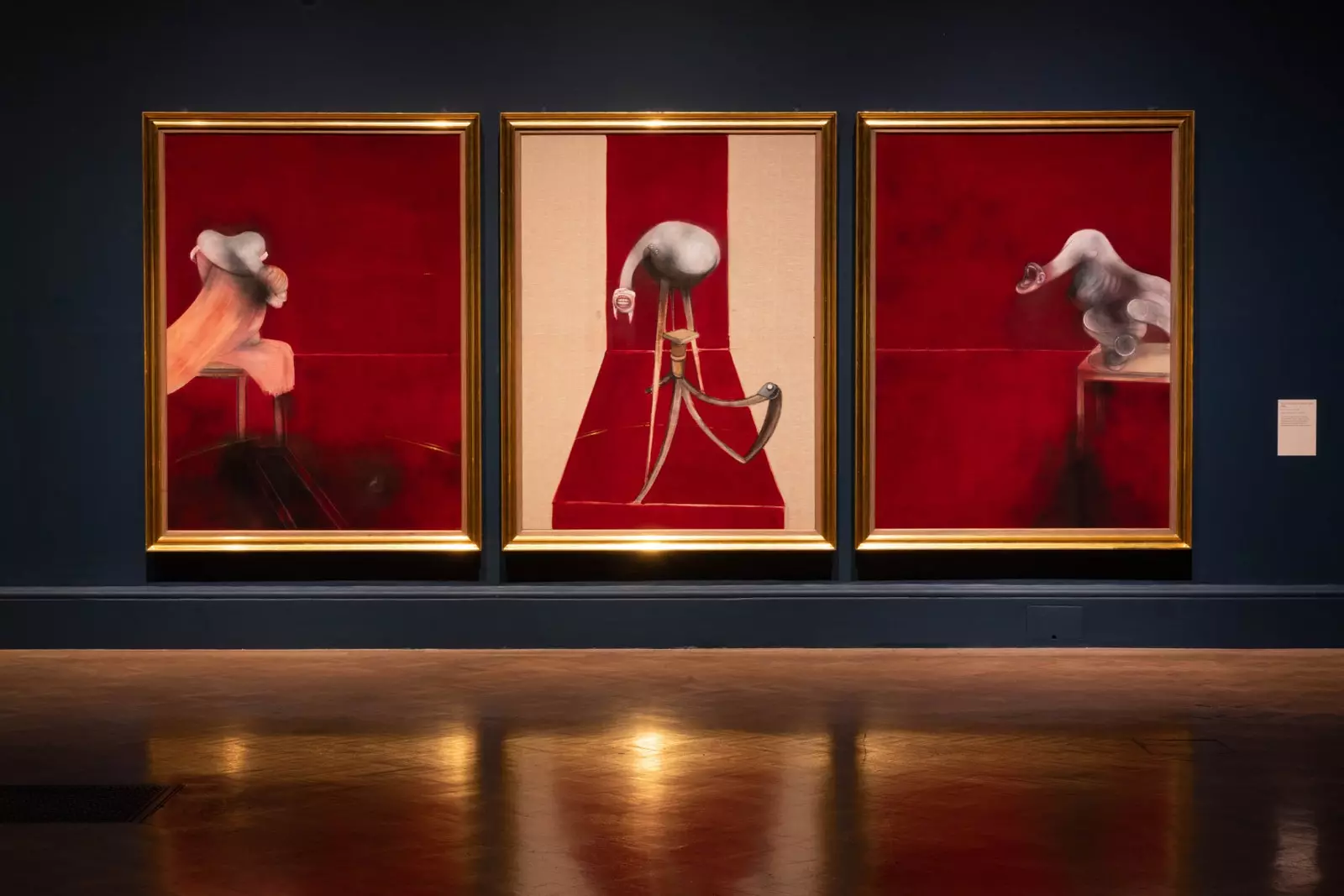
Francis Bacon, Second Version of Triptych 1944, 1988. ‘Francis Bacon: Man and Beast’, Royal Academy of Arts, London (January 29 – April 17, 2022).
For a decade Dyer took center stage in his series. Bacon made numerous studies of his face, in which he appears represented with closeness and a certain tenderness. If the portrait was the genre in which he sought to explore the limits between the human and the inhuman, Dyer appears deprived of the ravenous traits that showed the characters of the initial stage of it.
The relationship deteriorated towards the end of the 1960s, when Bacon established himself as exponent of high culture. Claimed in artistic circles despite his particularities, Dyer was relegated and sank into a violent alcoholism. In 1971, in Paris, the night before the opening of a Bacon retrospective at the Grand Palais, he committed suicide with a combination of alcohol and barbiturates.
Dyer continued present in Bacon's work after his death. In the Black Triptychs he represents the suicide sequence of his lover.
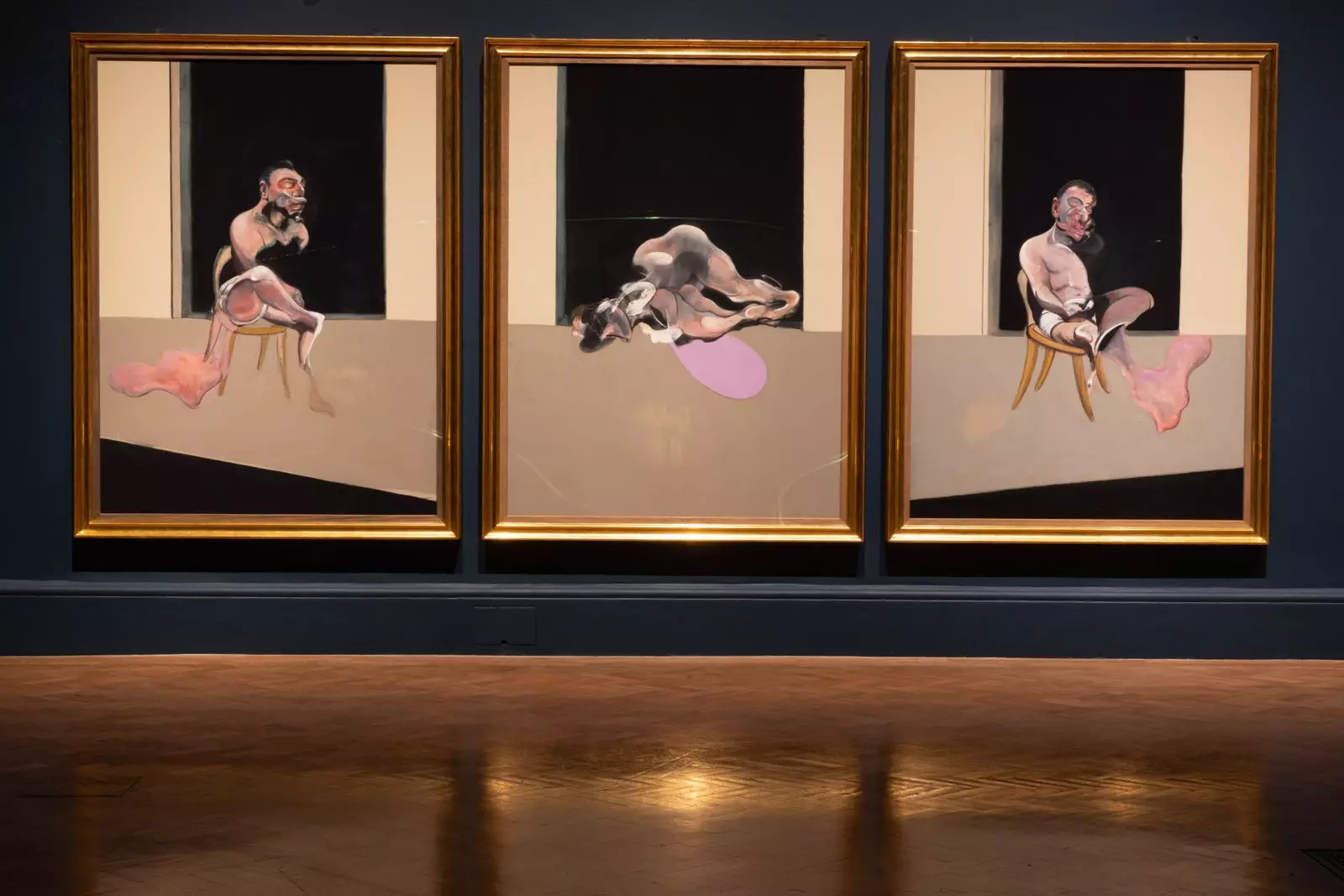
Francis Bacon, Triptych August 1972, 1972. ‘Francis Bacon: Man and Beast’, Royal Academy of Arts, London (January 29 – April 17, 2022).
AMONG DEMONS
The artist resurfaced from a a time that he himself defined as “demons, disaster and loss” when he met Spaniard José Capello at a party in London, whom he was more than 40 years older than. The relationship was consolidated in trips to Italy and Spain. He often went to Madrid, where he had the opportunity to revisit two of his referents: Velázquez and Goya, in the Prado Museum. He painted the last work of his in 1991.
Since then, the position of Francis Bacon as one of the great masters of the 20th century has not stopped growing. In 2013, 3 Lucien Freud studies reached Christie's New York for 142.4 million dollars, the highest price at auction until then, only surpassed in 2017 by Leonardo's Salvator Mundi.
